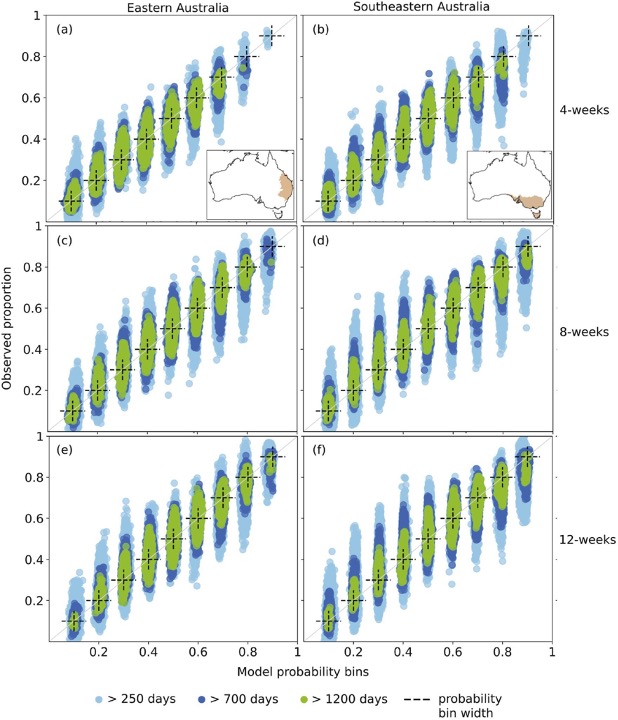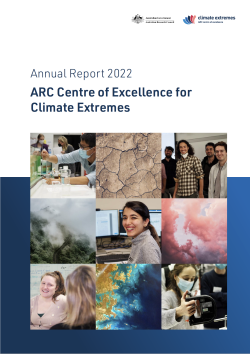The Drought research program at the ARC Centre of Excellence for Climate Extremes is focused on understanding what determines the onset, persistence and termination of drought. We are particularly interested in understanding this for the recent NSW drought (2017 to 2019) and into the future.
After a particularly wet couple of years in Australia, the Bureau of Meteorology declared an El Niño in September 2023. Understanding the link between El Niño and drought is a major research focus in the Drought program. Centre researchers have been busy communicating the impact of El Niño to the Australian community and policymakers and explaining why El Niño can be a challenge to predict.
Centre researchers also invested much effort into understanding the 2017 to 2020 NSW drought, which we named the “Tinderbox Drought”. This drought devastated rural communities and culminated in the Black Summer bushfires. Understanding past events like this drought will help us better prepare for future droughts. A special issue of the journal Climate and Weather Extremes focused on the Tinderbox Drought has been underway throughout 2023. That special issue brings together a cross-section of research focused on improving our understanding of the drought.
PROJECT 1
What determines the onset, persistence and termination of drought?
Large-scale climate modes, such as El Niño and positive Indian Ocean Dipole events, are often linked to increased drought risk in parts of eastern Australia.
However, the weather processes connecting these broad-scale distant features to local rainfall are unclear.
PROJECT 2
Why did the 2017 to 2020 drought in eastern Australia develop and what made it so impactful?
This case study has focused on the combined efforts of the Drought research program with a diversity of research being done to define the characteristics, the small- and large-scale drivers, and the predictability of the Tinderbox Drought (the 2017 to 2020 NSW drought).
For example, did interactions between the land and the atmosphere intensify the hot and dry extremes towards the end of the Tinderbox Drought and during Australia’s Black Summer fire disaster that punctuated the end of this severe drought?

RESEARCH SNAPSHOT

Centre Chief Investigator, Professor Nerilie Abram, contributed to a study on understanding groundwater recharge in southwestern Australia. This area of Australia
is particularly affected by reduced rainfall caused by human activities. Recent shifts in rainfall patterns have slowed the recharge of groundwater reserves, risking water supply to local communities. By analysing changes in cave stalagmites, the researchers showed that the decline in groundwater recharge over recent decades is unprecedented in the past 800 years. This points to an increasing impact of climate change on water availability in this region.
To further investigate how water availability has changed over many years, Centre researchers created computer simulations of the climate that go back a thousand years. These extended simulations help scientists get a clearer picture of how the climate and water resources change on their own, without any human impact. This understanding helps them predict what could happen as the climate gets warmer. These simulations will contribute to a major international modelling effort to understand past climate variations.
Priestley, S.C., Treble, P.C., Griffiths, A.D. et al. Caves demonstrate decrease in rainfall recharge of south-west Australian groundwater is unprecedented for the last 800 years. Communications Earth &Environment 4, 206 (2023). https://doi.org/10.1038/s43247-023- 00858-7.
RESEARCH SNAPSHOT
While predicting when droughts will begin is important, understanding when a drought will end is equally important. Centre postdoctoral fellow Dr Anjana Devanand led a study that developed a method to predict the chance that drought will end in the next four, eight or 12 weeks. For any location in southeast Australia that is currently in drought, the method uses a logistic regression model to take the current conditions and determine the likelihood that the drought will end according to the historical record.
The study found that the state of large-scale climate modes in the tropical Pacific Ocean (El Niño-Southern Oscillation) and tropical Indian Ocean (Indian Ocean Dipole) could alter the chances of a drought ending by up to 20 per cent. During ongoing droughts, estimates of drought recovery within sub-seasonal timescales are valuable for risk management, particularly within the agricultural and water resource sectors.
Devanand, A., J. P. Evans, G. Abramowitz, S. Hobeichi, and A. J. Pitman, 2023: What is the probability that a drought will break in Australia? Weather and Climate Extremes, 41, 100598, https://doi. org/10.1016/j.wace.2023.100598.


ARC Centre of Excellence for Climate Extremes – Annual Report 2023
From the Chair of the Advisory Board
Climate Science Leaders of the Future
Weather and Climate Interactions Research Program
Attribution and Risk Research Program
Ocean Extremes Research Program
Computational Modelling Systems
Governance, Management and our Commitment to Equity, Diversity and Inclusion

